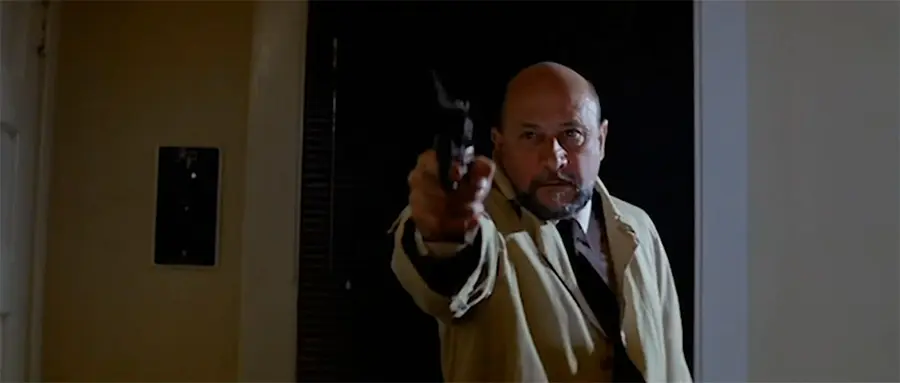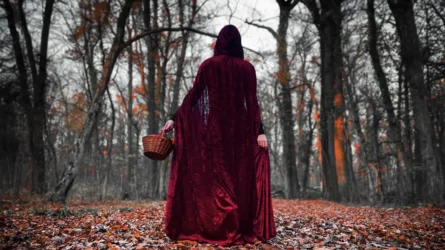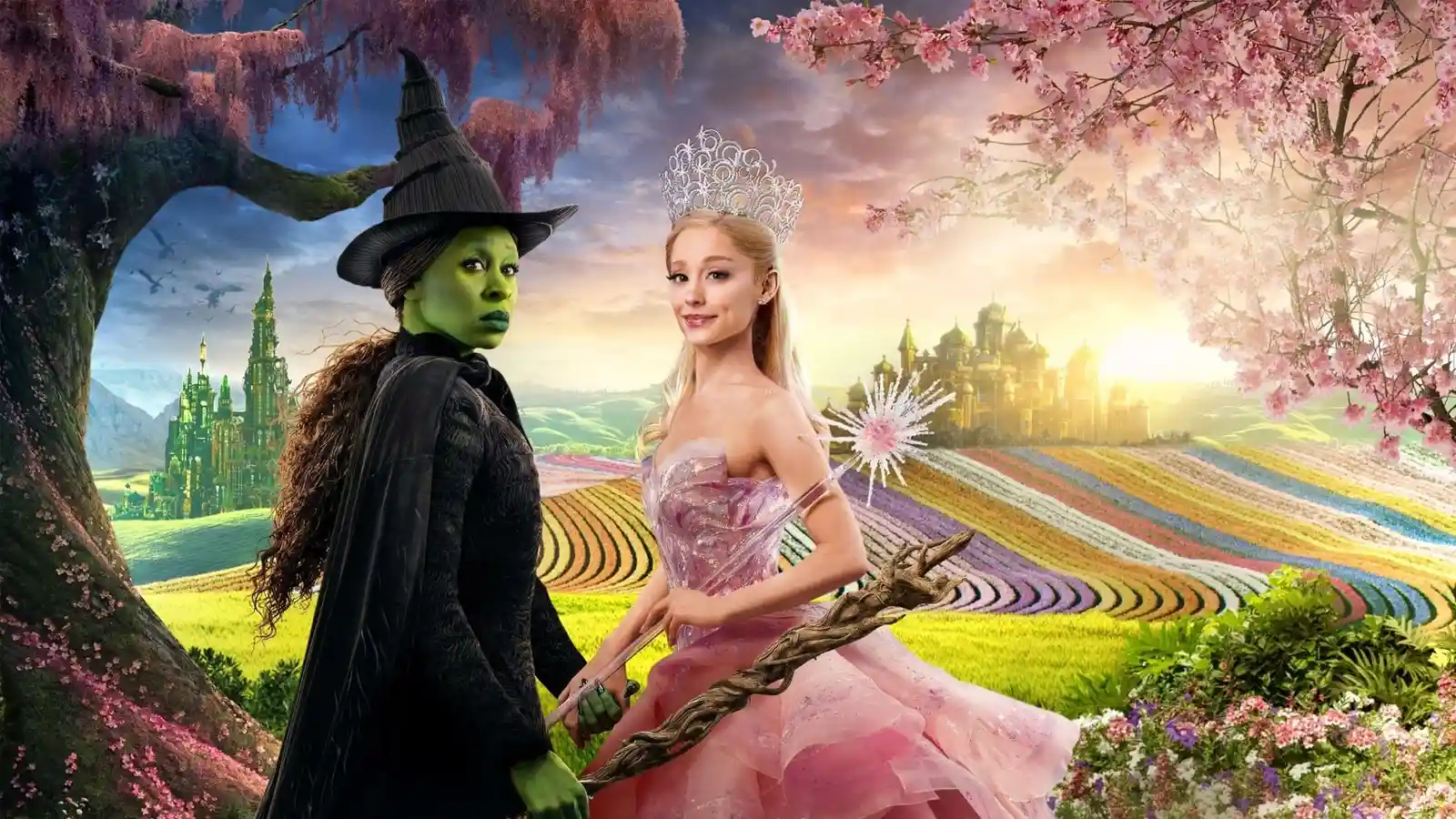The Final Girl
Develop your knowledge and understanding of this popular archetype first identified by Carol Clover.
Introduction
The “final girl” trope refers to the “intelligent” female protagonist in slasher films who suffers “agonizing trials” but “outsmarts” the villain and saves herself. After her friends have been brutally murdered, she is the lone survivor who has the strength to fight back. She is the victim and hero of the narrative.
We are going to explore how this cultural icon of cinema challenged and reinforced traditional gender roles and why male audiences were drawn to the female protagonist.
Contents
The Female Victim-Hero
The final girl is “presented from the outset as the main character” and she is “the only character to be developed in any psychological detail”. She is “watchful to the point of paranoia” and recognises the “small signs of danger that her friends ignore”. The final girl will begin to take precautions while other characters dismiss the strange noises to focus on their own concerns and desires.
After her friends have been murdered, she “encounters the mutilated bodies” and is fully aware of the “horror” and “her own peril”. She is “chased, cornered, wounded” by the killer. She will “scream, stagger, fall, rise, and scream again”. She is a victim.
However, the final girl is “resourceful” enough to fight back with “ferocity” and somehow “finds the strength” to survive. Her courage is clear from the way she “looks for the killer”. The film will depict the final girl “tracking him to his forest hut or his underground labyrinth”. She will persevere “long enough to be rescued” or defeat the killer. She is a hero.
Clover (1992) believed these women are “protagonists in the full sense” because “they combine the functions of suffering victim and avenging hero” in the narrative. This combination of vulnerability and strength makes her an incredibly engaging character.
Gender Trouble
The early slasher films from the 1970s may have been driven by a “cultural imperative” to reinforce traditional gender roles because they featured a male rescuer who would arrive at the last moment to save the final girl. A good example of this sort of resolution is the psychologist who shoots the antagonist, Michael Myers, in Halloween (1978) and saves Laurie.

By 1980, the male characters become “marginal” and “undeveloped”. The authority figures of “policemen, fathers, and sheriffs” appear on the screen long enough to establish their “incomprehension and incompetence” before they are quickly dispatched by the killer.
There is “no male agency”. The final girl might be “smaller and weaker than the killer”, but she has the intelligence and determination to save herself.
Judith Butler (1992) argued gender is constructed through the “repetition of stylized acts” and the “rituals” we perform. Mainstream cinema often reinforced traditional gender identities by depicting men as adventurous and combative whereas women were reduced to plot devices and objectified for the male gaze.
However, the binary opposition between the passive female and active male is “unsettled in the slasher film”. The final girl is not a damsel in distress reliant on a male character to be saved – she defeats the killer.
This challenge to the dominant ideology had its limits. For instance, the final girl was often depicted as boyish. Consider the following list of names of some final girls in famous slasher films:
- Laurie – Halloween (1978)
- Ripley – Alien (1979) – Clover stated the character “owes a clear debt to the slasher tradition”
- Terry – Motel Hell (1980)
- Stevie – The Fog (1980)
- Marti – Hell Night (1981)
- Stretch – The Texas Chainsaw Massacre 2 (1986)
Perhaps the gender identities of these names are deliberately ambiguous because the characters take on traditional feminine and masculine modes in the narratives.
Although the early slashers did “constitute a visible adjustment in the terms of gender representations”, it is important to emphasise the final girls are brutalised by their attackers. They are victims for most of the story and it is only in the final act they become heroes.
The Masculinised Audience
Formal surveys and informal research suggest “adolescent males” are the main consumers of horror films. Clover polled sixty employees of rental outlets who confirmed the “majority viewer” of slasher films were “young males”. For example, I Spit on Your Grave (1978) was “rented nine times out of ten to male viewers” who were “mostly under the age of twenty-five”.
This demographic is the “slasher film’s implied audience”.
According to David Gauntlett (2008), the media can give us the tools to help construct our personal identity. Seeing versions of ourselves on the screen can be very empowering. That’s why representation matters. But why are male viewers prepared to identity with the female victim-heroes?
Slasher films are still produced by “the cinematic apparatus” that appeals to the male gaze. Groups of young boys will “cheer the killer on as he assaults his victims” because the “monsters” are likely to have masculine traits.
Clover drew attention to how male victims are often “encoded as feminine” and “the death of a male is nearly always swift” in horror films. The audience views the murder from a distance, or it is obscured by darkness or fog, and men are more likely to be killed offscreen.
Importantly, the masculinity of the audience is not questioned by these representations of men being “dismissed through ridicule or death”. The young male cinemagoer is alert to the dangers, and they are not stupid enough to go into the basement without a decent weapon.
The deaths of female characters tend to last longer. Their murders are “filmed at closer range” and “in more graphic detail”. Again, masculinity is not threatened by these acts of violence.
If the monster is a woman, she will have “masculine expressions”.
Action films often feature male characters who “undergo all manner of indignity before they rise to annihilate their tormentors”. They survive the physical and emotional threats and defeat the villains. They are victims but their heroic qualities are never in doubt.
By contrast, the horror genre emphasises the victim part of the story. Clover suggested this could be a reason why boys were willing to accept the final girl trope because the representation enabled them to experience “forbidden desires” and “disavow” them at the same time. Of course it could be “sadistic voyeurism” as well.
When secondary characters are dispatched, the sequence is often presented from the point of view of the attacker. By contrast, the attack on the final girl is presented from “the victim’s point of view” and “comes with shocking suddenness”. The audience are being positioned to sympathise with the victim-hero.
In the final act, the young male audience will “cheer the survivor on as she assaults the killer”. Her fight for survival does not “disturb the structures of male competence”.
The “discourse” of slasher films is “wholly masculine” to reinforce the values and ideologies of the target audience.
The Slasher
Clover suggested the slasher genre had a “spiritual debt” to Alfred Hitchcock’s Psycho (1960) because the classic film established some of the codes filmmakers would rely on to terrify their audiences. For instance, the killer in many slashers is the “psychotic product of a sick family” which echoes Norman Bates and his mother “locked in a sick attachment”.
The main settings in Psycho are creepy. The Bates Motel is remote and empty. The old mansion is tall with steep gables and dark windows. Perfect for the psychological horror in the story. Invariably, slasher films feature a “Terrible Place” – isolated and abandoned spaces, decaying factories, sewers and tunnels, dark forests, asylums, junkyards, and slaughterhouses. If the stories are set in more familiar locations, such as high schools or shopping malls, the violence occurs at night when the characters are trapped in the dark.
All these nightmarish settings heighten the sense of danger.
In terms of character types and their spheres of action, the same function is performed by “a gorilla, a blob, a shark, and a motel attendant”. The roles of the victim and hero are also predictable.
Clover noted how the killer’s “weapon is something other than a gun”. In the iconic shower scene, Norman Bates slashes his victim with a knife. Audiences expect to see the killer using “knives, hammers, axes, ice picks, hypodermic needles, red hot pokers, pitchforks, and the like”. Killers use these sorts of weapons because they stalk their victims in “stealth”. Symbolically, the weapons are “personal extensions of the body that bring attacker and attacked into primitive, animalistic embrace”.
Slashers use gore to shock the audience, especially when the body is “opened” by these weapons. According to Hitchcock, the prop department did create a torso made of pink rubber that could be stabbed in Psycho, but the director preferred to use frenzied editing to convey the character’s death in the shower scene.

The mode of address in horror films is an “engagement of repressed fears and desires”. The stories position the audience to explore our fear of death and the unknown. They reflect a loss of control in our lives and let us experience vulnerability in a socially acceptable way. For example, Psycho engages with our unconscious fear of maternal control and the fear of being watched.
The “final phase” of the narrative focuses on the “functions of victim and hero”. Our fears are purged by the exciting resolution to the story when good triumphs over evil.
Many directors continue to “pay a visual tribute” to Psycho by including a shower scene or the “shadow of a knife-wielding hand”. Steve Neale (1980) argued genre is a process of “repetition and difference”. Directors purposefully copy elements that successfully engaged the audience and offer their own twists on the conventions. For Clover, the “cinematic conventions of horror” and “basic structures” are “fixed and fundamental”. Fans of the genre expect to see psychotic killers, terrible places, intimate murders, and the victim-heroes. The final girl is another important element of slashers.
Money
If you read our introduction to David Hesmondhalgh, you will know companies involved in the cultural industries are driven by profit. Clover acknowledged this economic imperative and stated slasher films are often produced on the basis of “imitation” with a “proliferation of sequels and rip-offs” because the formula makes money. Audiences reacted positively to the early representations of the final girl, so production companies were eager to replicate that financial success and developed the victim-hero archetype.
Perhaps “the fiscal conditions of low-budget filmmaking” allowed the producers to take risks and feature female protagonists because they were not operating in “mainstream environments” where they had to satisfy larger audiences and the demands of the studio executives. They could have that “creativity and individual vision” to explore other narratives, such as the stories featuring the final girl.
Final Thoughts
Although the archetype came from “low-budget origins and messier meanings”, the final girl now “circulates” in “cleaner and more upscale venues”. The archetype has moved beyond the slasher horror because her core attributes – intelligence and resilience – resonate across genres.
We have already mentioned Ellen Ripley in Alien – a hybrid between science-fiction and horror. She warns the other members of the crew to be more careful and then is resourceful and strong enough to defeat the monster. Another good example is Sarah Connor who starts The Terminator franchise as a victim on the run but is quickly transformed into a soldier.
Clarice Starling in the Oscar winning The Silence of the Lambs (1991) is a final girl in a crime-horror setting, and Ellie in The Last of Us (2013) inherits the survival instincts of the victim-hero archetype in the video game’s post-apocalyptic setting.
The final girl is no longer just a victim who happens to survive. She is now a warrior and strategist who has the strength to reclaim power from the forces that threaten her life. She is a hero.
Bibliography
Butler, Judith (1992) Gender Trouble: Feminism and the Subversion of Identity.
Clover, J. Carol (1992) Men, Women and Chainsaws. Princeton University Press.
Gauntlett, David (2008) Gender, Media and Identity: An Introduction. Routledge.
Hesmondhalgh, David (2019) The Cultural Industries.
Mulvey, Laura (1975) Visual pleasure and narrative cinema.
The Story Continues
Turn to the next page and develop your knowledge of how media producers build worlds, characters, and meanings through narrative.







